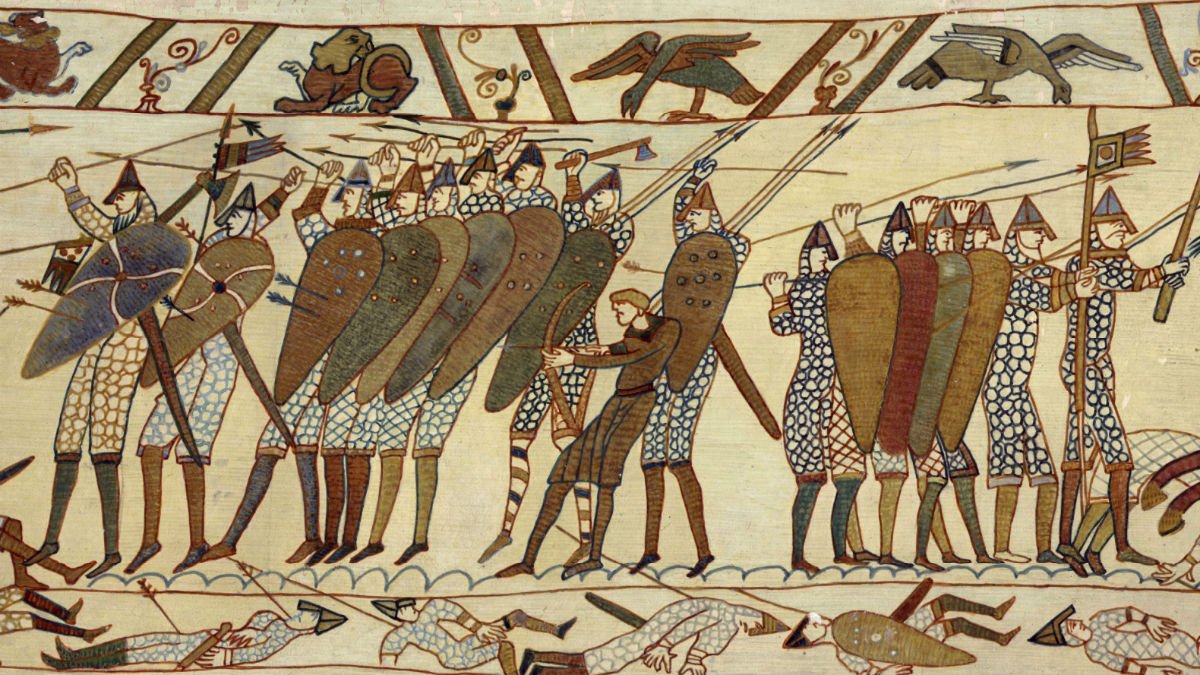
The Battle of Hastings assumes a momentous position in the annals of history, signifying a crucial juncture that indelibly shaped England’s destiny and marked the commencement of an epoch.
On the momentous day of October 14, 1066, this epic confrontation unfolded, leaving an enduring imprint on the course of time.
Join us as we delve into the enthralling narrative of the Battle of Hastings, delving into its profound significance and enduring ramifications on the tapestry of history.
The Background of the Battle
The Battle of Hastings was rooted in a complex power struggle for the English throne.
After the passing of King Edward the Confessor, the crown became a sought-after prize, sparking a turbulent succession crisis.
The main contenders vying for the throne were Harold Godwinson, Harold Hardrada of Norway, and William, Duke of Normandy.
Their ambitions set the stage for a historic conflict that would shape the fate of England.
- Read also: Battle of Culloden Clans: Unraveling the Historic Conflict
- Read also: What Was the Shortest War in History
William the Conqueror’s Claim
William, the Duke of Normandy, asserted his right to the English throne, substantiating his claim by referring to a promise made by King Edward, designating him as the rightful heir.
Additionally, William contended that Harold Godwinson had sworn allegiance during a visit to Normandy, further fortifying his case for the crown.
These historical events added intricate layers to the succession crisis and set the wheels in motion for the Battle of Hastings, an epochal clash that would redefine the trajectory of English history.
The Norman Invasion
In the aftermath of Harold Godwinson’s coronation as King of England, William the Conqueror perceived it as an act of betrayal, thus compelling him to amass a formidable force to assert his claim to the throne.
Hence commenced the historic Norman invasion of England, a seminal event that would indelibly shape the nation’s destiny.
The Battle Unfolds
The Battle of Hastings transpired in the proximity of Hastings town in Sussex, England.
It unfolded as a day filled with intense and ferocious combat, as both sides vied relentlessly for supremacy.
Despite the valiant efforts of the English forces, it was William and his Norman army who emerged triumphant, altering the course of England’s history forever.
The Death of King Harold
In a tragic turn of events, King Harold Godwinson met his end during the battle, as he was struck fatally in the eye by an arrow.
With his untimely death, the destiny of the English crown was sealed, clearing the path for William the Conqueror’s rise to power.
William’s Coronation
Following his resounding victory, William the Conqueror ascended to the throne and was crowned King of England on Christmas Day in 1066.
This historic coronation marked the dawning of a new age, heralding the beginning of Norman rule in England.
The Impact on English Society
The profound impact of the Battle of Hastings reverberated across English society.
With the advent of the Norman era, sweeping changes shaped the country’s social, political, and cultural fabric.
Notably, the Norman influence left an indelible mark through innovative architectural styles, evolving legal systems, and linguistic elements, shaping England’s identity for centuries to follow.
The Domesday Book
A remarkable testament to William the Conqueror’s rule was the creation of the Domesday Book, an enduring legacy that stands as a comprehensive survey of England’s land and property.
This invaluable historical document provides a window into the nation’s socioeconomic landscape during that era, offering invaluable insights into the past.
Historical Legacy
The significance of the Battle of Hastings echoes through the ages, leaving an indelible mark on England’s path.
It forged a profound link between England and Normandy, signifying the end of the Viking Age and setting the stage for the unification of medieval England.
Enduring Symbolism
The Battle of Hastings stands as a timeless symbol, representing the dynamic nature of historical evolution and the profound impact of critical confrontations.
It encapsulates the intricate interplay of human ambitions, loyalties, and destinies woven into the tapestry of history.
- Read also: What would happen if World War 3 broke out
- Read also: Victorian Era Fashion: A Look at the Victorian Era Dress
Conclusion
The Battle of Hastings holds profound significance in the annals of English history, leaving an enduring impact on the nation’s identity and cultural heritage.
William the Conqueror’s victory forged a new era, intertwining Norman and English traditions, and shaping the course of the country’s destiny.
This ancient clash of kingdoms fought centuries ago continues to reverberate through time, preserving its historical importance and captivating the curiosity of historians and enthusiasts alike.
FAQs
The Battle of Hastings was triggered by a power struggle for the English throne following the death of King Edward the Confessor. Multiple claimants, including Harold Godwinson, Harold Hardrada, and William the Conqueror, vied for the crown.
The Norman forces, led by William the Conqueror, emerged victorious, and King Harold Godwinson lost his life during the battle. William was subsequently crowned King of England.
The Battle of Hastings led to the beginning of the Norman era in England, bringing about significant changes in society, architecture, law, and language.
The Domesday Book, commissioned by William the Conqueror, was a comprehensive survey of England’s land and property, providing invaluable insights into the country’s socioeconomic status at that time.
The Battle of Hastings stands as a symbol of historical change due to its pivotal role in altering England’s course and bringing about the end of the Viking Age, leading to the consolidation of medieval England.



